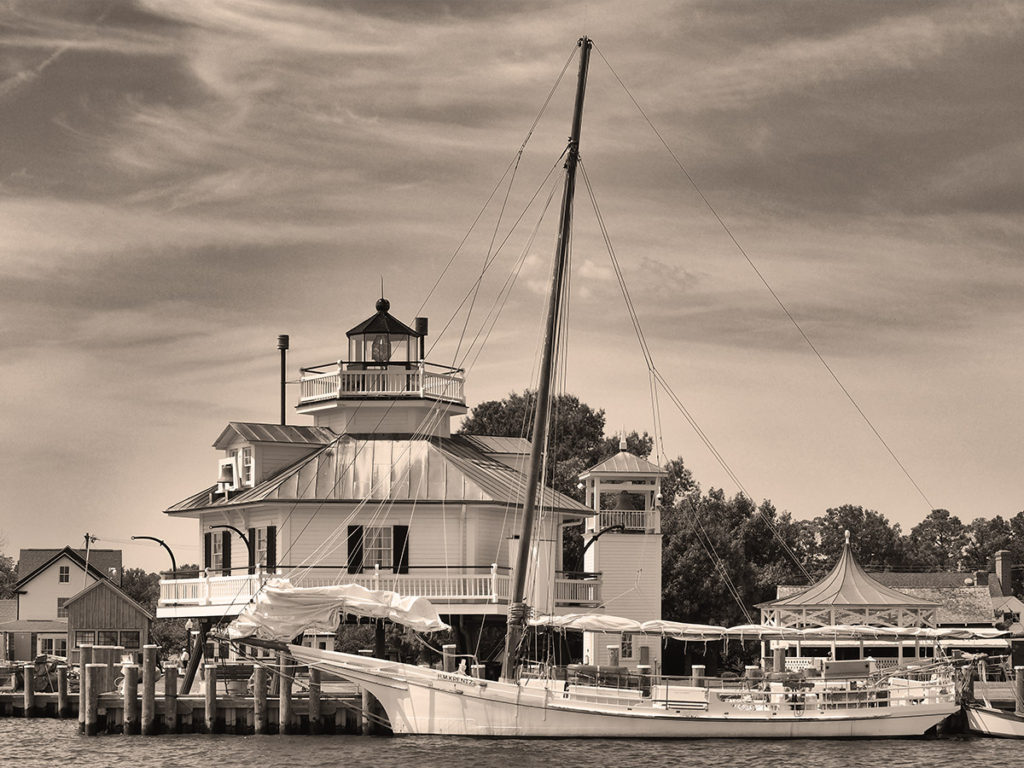

Now sitting on the water’s edge at the Chesapeake Bay Maritime Museum in Saint Michaels, Md., the “screw-pile” Hooper Strait Light House is something of a good-natured fraud. It never sat on land during its 75 years of operation as a ship-guiding lighthouse. Then, located 60 miles south in open water at the entrance of the Bay’s Tangier Sound, the structure was a tiny made-man island sitting on iron legs screwed into bedrock beneath the water.
In the 19th century, such screw-pile, open-water lighthouses were designed to be more stable replacements for the “lightships,” or ships converted into floating lighthouses and anchored to mark crucial navigation channels. But these vessels were very vulnerable to storm waves, high winds and ice.
In the 1960s, the obsolete Hooper Strait Light was being readied for demolition but gained a reprieve as the newly-opened Maritime Museum hauled it back and land and restored it as a classic example of an earlier era of Chesapeake nautical life.
The Light, and the equally historic oyster-dredging skipjack H.M. Krentz moored alongside it, create a great yesteryear sepia photo that would not have been the same had it been taken in color. The world of Chesapeake Bay history just seems particularly well attuned to sepia.
